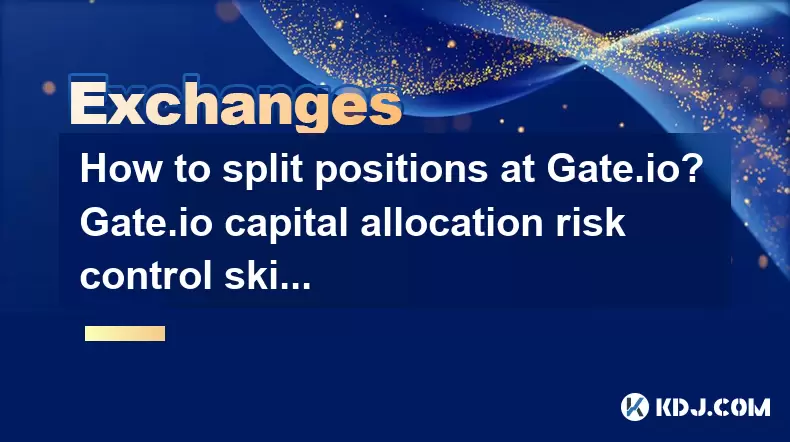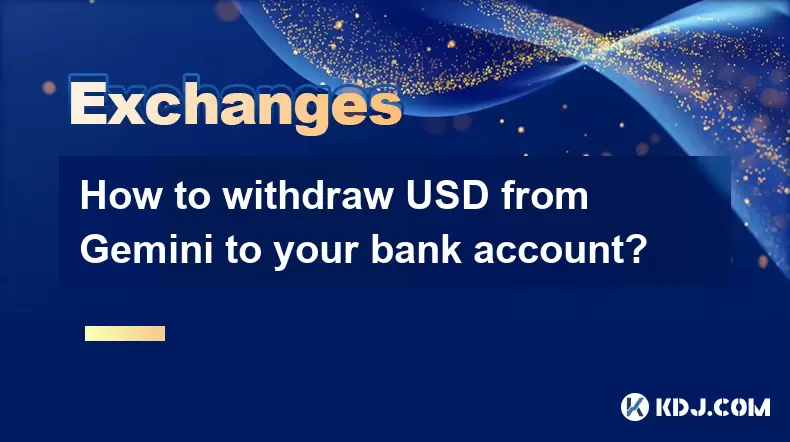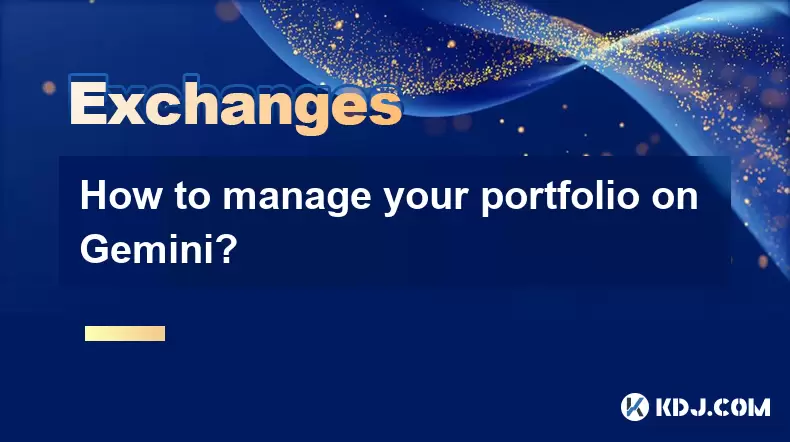-
 Bitcoin
Bitcoin $114400
0.68% -
 Ethereum
Ethereum $3550
2.48% -
 XRP
XRP $3.001
4.99% -
 Tether USDt
Tether USDt $0.9999
0.01% -
 BNB
BNB $757.6
1.46% -
 Solana
Solana $162.9
1.07% -
 USDC
USDC $0.9998
0.00% -
 TRON
TRON $0.3294
0.91% -
 Dogecoin
Dogecoin $0.2015
2.46% -
 Cardano
Cardano $0.7379
2.01% -
 Stellar
Stellar $0.4141
8.83% -
 Hyperliquid
Hyperliquid $37.83
-1.91% -
 Sui
Sui $3.454
0.76% -
 Chainlink
Chainlink $16.62
3.53% -
 Bitcoin Cash
Bitcoin Cash $554.6
2.84% -
 Hedera
Hedera $0.2486
3.91% -
 Ethena USDe
Ethena USDe $1.001
0.00% -
 Avalanche
Avalanche $21.95
3.34% -
 Toncoin
Toncoin $3.563
-2.85% -
 Litecoin
Litecoin $112.7
2.65% -
 UNUS SED LEO
UNUS SED LEO $8.977
0.13% -
 Shiba Inu
Shiba Inu $0.00001232
1.85% -
 Uniswap
Uniswap $9.319
2.93% -
 Polkadot
Polkadot $3.632
1.38% -
 Monero
Monero $307.2
2.36% -
 Dai
Dai $0.9997
-0.03% -
 Bitget Token
Bitget Token $4.340
0.91% -
 Pepe
Pepe $0.00001048
1.07% -
 Cronos
Cronos $0.1348
3.26% -
 Aave
Aave $261.5
1.93%
How to split positions at Gate.io? Gate.io capital allocation risk control skills
Position splitting at Gate.io involves dividing capital into smaller positions to manage risk and potentially increase returns, using strategies like diversification and time-based allocation.
Jun 09, 2025 at 04:56 am

Introduction to Position Splitting at Gate.io
Position splitting is a crucial risk management technique used by traders on cryptocurrency exchanges like Gate.io. It involves dividing your capital into multiple smaller positions to spread risk and potentially increase returns. By allocating your funds across different assets or trades, you can mitigate the impact of a single loss and enhance your overall trading strategy. In this article, we will explore how to effectively split positions at Gate.io and discuss the essential skills for capital allocation and risk control.
Understanding the Basics of Position Splitting
Before diving into the specifics of splitting positions at Gate.io, it's important to understand the fundamental concept. Position splitting aims to reduce the risk of losing your entire investment in one go. Instead of putting all your capital into a single trade, you divide it into smaller portions. This way, even if one trade fails, you still have other positions that might perform well.
For example, if you have $10,000 to invest, instead of putting it all into one cryptocurrency, you might split it into five positions of $2,000 each. This approach can help you manage risk more effectively and potentially improve your overall trading performance.
Setting Up Your Gate.io Account for Position Splitting
To start splitting positions at Gate.io, you need to set up your account properly. Here's a detailed guide on how to do it:
- Register and Verify Your Account: Go to the Gate.io website, click on "Sign Up," and follow the prompts to create an account. Complete the KYC (Know Your Customer) verification process to unlock higher withdrawal limits and additional features.
- Deposit Funds: Navigate to the "Wallet" section, select "Deposit," and choose the cryptocurrency you want to deposit. Follow the instructions to transfer funds from your external wallet to your Gate.io account.
- Enable Two-Factor Authentication (2FA): For added security, go to the "Security" settings and enable 2FA. This step is crucial for protecting your account from unauthorized access.
Once your account is set up and funded, you can begin to implement your position splitting strategy.
Strategies for Splitting Positions at Gate.io
There are several strategies you can use to split positions effectively at Gate.io. Here are some popular approaches:
- Diversification Across Different Cryptocurrencies: Instead of focusing on a single cryptocurrency, spread your investment across multiple assets. For instance, you might allocate 25% to Bitcoin, 25% to Ethereum, 20% to Litecoin, and the remaining 30% to other promising altcoins.
- Time-Based Position Splitting: Divide your capital into positions that you plan to hold for different durations. You might have short-term trades that you plan to close within a few days, medium-term positions that you hold for weeks, and long-term investments that you keep for months or even years.
- Risk-Based Allocation: Allocate your capital based on the risk level of each position. Higher-risk trades might receive a smaller portion of your capital, while lower-risk investments could get a larger allocation.
Implementing Position Splitting on Gate.io
Now that you understand the strategies, let's look at how to implement position splitting on Gate.io:
- Access the Trading Interface: Log into your Gate.io account and navigate to the trading section. You can choose between spot trading, margin trading, or futures trading, depending on your strategy.
- Select Your Assets: Choose the cryptocurrencies you want to invest in based on your chosen strategy. Make sure to research each asset thoroughly before making a decision.
- Place Your Orders: Use the trading interface to place your orders. For example, if you're following a diversification strategy, you might place five separate buy orders for different cryptocurrencies.
- Monitor and Adjust: Keep an eye on your positions and be ready to adjust them as market conditions change. You might need to rebalance your portfolio periodically to maintain your desired risk level.
Risk Control Techniques at Gate.io
Effective risk control is essential when splitting positions. Here are some techniques you can use at Gate.io:
- Stop-Loss Orders: Use stop-loss orders to automatically sell a position if it reaches a certain loss threshold. This can help limit your losses and protect your capital.
- Take-Profit Orders: Set take-profit orders to automatically sell a position when it reaches a certain profit level. This can help you lock in gains and reduce the risk of giving back profits.
- Regular Portfolio Review: Regularly review your portfolio to ensure it aligns with your risk tolerance and investment goals. Adjust your positions as needed to maintain a balanced and diversified portfolio.
Advanced Capital Allocation Skills
To take your position splitting to the next level, consider these advanced capital allocation skills:
- Correlation Analysis: Analyze the correlation between different cryptocurrencies to avoid overexposure to similar assets. For example, if Bitcoin and Ethereum are highly correlated, you might want to reduce your allocation to one of them.
- Volatility-Based Allocation: Allocate more capital to assets with lower volatility and less to those with higher volatility. This can help you manage risk more effectively.
- Rebalancing Strategies: Implement a rebalancing strategy to periodically adjust your positions back to your target allocations. This can help you maintain your desired risk profile over time.
Frequently Asked Questions
Q1: How often should I rebalance my positions at Gate.io?
The frequency of rebalancing depends on your trading strategy and market conditions. Some traders rebalance weekly, while others do it monthly or even quarterly. It's important to find a balance that suits your trading style and risk tolerance.
Q2: Can I use position splitting with margin trading on Gate.io?
Yes, you can use position splitting with margin trading on Gate.io. However, margin trading involves higher risk, so it's crucial to use stop-loss orders and carefully manage your leverage to avoid significant losses.
Q3: What are the benefits of using stop-loss orders when splitting positions?
Stop-loss orders can help you limit potential losses by automatically selling a position if it reaches a certain loss threshold. This can protect your capital and prevent a single losing trade from significantly impacting your overall portfolio.
Q4: How can I determine the optimal allocation for each position at Gate.io?
Determining the optimal allocation involves considering factors such as your risk tolerance, the risk level of each asset, and your overall investment goals. You might start with an equal allocation and then adjust based on performance and market conditions.
Disclaimer:info@kdj.com
The information provided is not trading advice. kdj.com does not assume any responsibility for any investments made based on the information provided in this article. Cryptocurrencies are highly volatile and it is highly recommended that you invest with caution after thorough research!
If you believe that the content used on this website infringes your copyright, please contact us immediately (info@kdj.com) and we will delete it promptly.
- Cryptocurrency, Altcoins, and Profit Potential: Navigating the Wild West
- 2025-08-04 14:50:11
- Blue Gold & Crypto: Investing Disruption in Precious Metals
- 2025-08-04 14:30:11
- Japan, Metaplanet, and Bitcoin Acquisition: A New Era of Corporate Treasury?
- 2025-08-04 14:30:11
- Coinbase's Buy Rating & Bitcoin's Bold Future: A Canaccord Genuity Perspective
- 2025-08-04 14:50:11
- Coinbase's Buy Rating Maintained by Rosenblatt Securities: A Deep Dive
- 2025-08-04 14:55:11
- Cryptos, Strategic Choices, High Returns: Navigating the Meme Coin Mania
- 2025-08-04 14:55:11
Related knowledge

How to set and manage alerts on the Gemini app?
Aug 03,2025 at 11:00am
Understanding the Gemini App Alert SystemThe Gemini app offers users a powerful way to stay informed about their cryptocurrency holdings, price moveme...

How to use the Gemini mobile app to trade on the go?
Aug 04,2025 at 09:14am
Setting Up the Gemini Mobile AppTo begin trading on the go using the Gemini mobile app, the first step is installing the application on your smartphon...

What to do if you forgot your Gemini password?
Aug 04,2025 at 03:42am
Understanding the Role of Passwords in Gemini AccountsWhen using Gemini, a regulated cryptocurrency exchange platform, your password serves as one of ...

What are the websocket feeds available from the Gemini API?
Aug 03,2025 at 07:43pm
Overview of Gemini WebSocket FeedsThe Gemini API provides real-time market data through its WebSocket feeds, enabling developers and traders to receiv...

How to withdraw USD from Gemini to your bank account?
Aug 04,2025 at 11:01am
Understanding Gemini and USD WithdrawalsGemini is a regulated cryptocurrency exchange platform that allows users to buy, sell, trade, and store digita...

How to manage your portfolio on Gemini?
Aug 03,2025 at 10:36am
Accessing Your Gemini Portfolio DashboardTo begin managing your portfolio on Gemini, you must first log in to your account through the official websit...

How to set and manage alerts on the Gemini app?
Aug 03,2025 at 11:00am
Understanding the Gemini App Alert SystemThe Gemini app offers users a powerful way to stay informed about their cryptocurrency holdings, price moveme...

How to use the Gemini mobile app to trade on the go?
Aug 04,2025 at 09:14am
Setting Up the Gemini Mobile AppTo begin trading on the go using the Gemini mobile app, the first step is installing the application on your smartphon...

What to do if you forgot your Gemini password?
Aug 04,2025 at 03:42am
Understanding the Role of Passwords in Gemini AccountsWhen using Gemini, a regulated cryptocurrency exchange platform, your password serves as one of ...

What are the websocket feeds available from the Gemini API?
Aug 03,2025 at 07:43pm
Overview of Gemini WebSocket FeedsThe Gemini API provides real-time market data through its WebSocket feeds, enabling developers and traders to receiv...

How to withdraw USD from Gemini to your bank account?
Aug 04,2025 at 11:01am
Understanding Gemini and USD WithdrawalsGemini is a regulated cryptocurrency exchange platform that allows users to buy, sell, trade, and store digita...

How to manage your portfolio on Gemini?
Aug 03,2025 at 10:36am
Accessing Your Gemini Portfolio DashboardTo begin managing your portfolio on Gemini, you must first log in to your account through the official websit...
See all articles

























































































